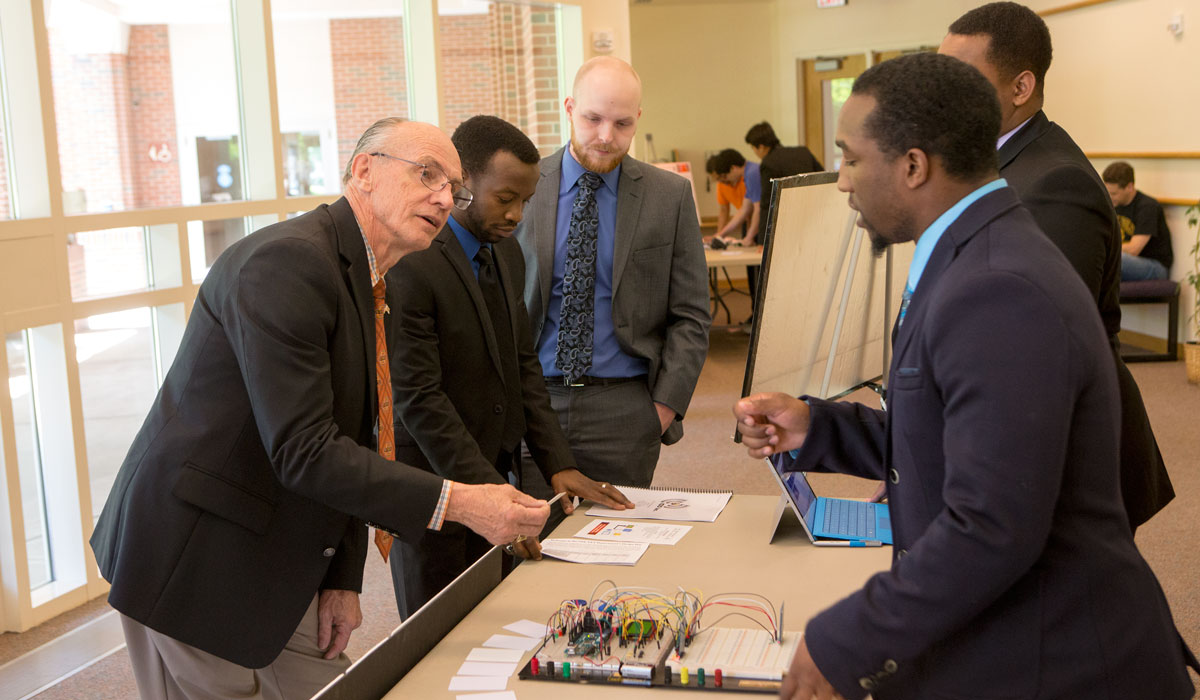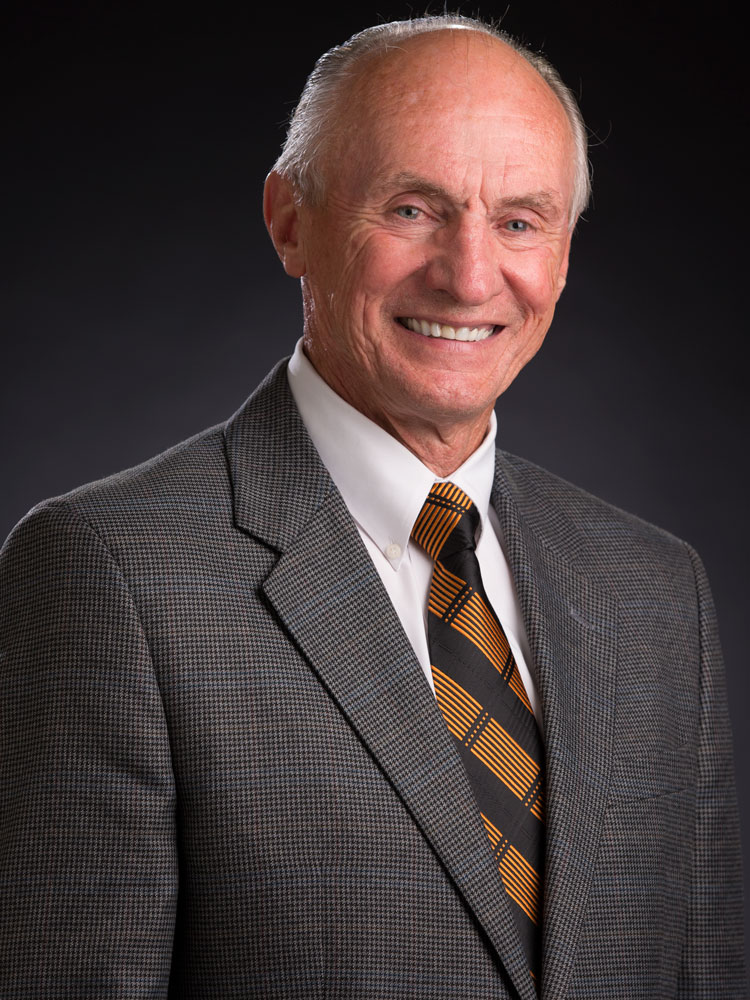An Industry-Appreciated Education
Thursday, November 5, 2015

The real-world experience of OSU’s engineering technology faculty is a key factor in preparing students for hands-on engineering careers. More than 90 percent of OSU’s engineering technology faculty members have at least five years of industry experience, says Dana Hobson, interim head of the Division of Engineering Technology.
Oklahoma State’s Engineering Technology Division includes four degree programs: construction management technology, electrical engineering technology, fire protection and safety engineering technology, and mechanical engineering technology.
With nearly 950 students and 23 faculty positions, the Engineering Technology Division is the second-largest school in OSU’s College of Engineering, Architecture and Technology.

Most of the engineering technology faculty spent long careers in industry before teaching at OSU. Dr. Antone Kusmanoff, a faculty member in Electrical Engineering Technology, is one example: he served 20 years in the Air Force as a communications systems officer. After retiring from the Air Force, Kusmanoff earned his doctorate at OSU and took a job at Southwest Research Institute working on multiple contracts associated with computer and information systems for NASA’s Johnson Space Center and other government and defense organizations.
Kusmanoff worked as a principal systems engineer for three major defense industry contractors: E-Systems, Raytheon and L-3 Communications. Altogether, he worked in the industry for 24 years after he retired from the Air Force. Although the two fields overlap, electrical engineering technology is more applied, whereas electrical engineering is more theoretical. Kusmanoff says that even though he has a doctorate in electrical engineering, he spent most of his time in industry doing applied engineering, such as building parts for a new communication system in the Johnson Space Control Center.
"There’s a lot of demand for people who have that applied engineering skill set,” says Kusmanoff.
Kusmanoff puts his senior design students in industry-like experiences. The students work in teams to build microprocessor-based projects suited for the needs of customers.
“I’m making them experience it, not just telling them about it,” says Kusmanoff.
Senior student Jeff Johnson says he is using what he learned in his electrical engineering technology classes in his internship with Hewlett-Packard.
“Mainly what I do is programming. We learned the different languages throughout the program courses, and I’ve actually used every single language to do multiple projects,” says Johnson.
Hobson says there are several reasons why OSU engineering technology students are capable of solving real-world application problems: One, the technology program attracts students with a desire to work with their hands and their minds to physically make things work. Second, the fact that the faculty members have been truly successful gives validity to what they say. The third reason is that the entire technology curriculum is hands-on rather than theoretical.
As an example of the curriculum, Hobson says that two 400-hour internships are required in construction management technology — one between the sophomore and junior years and the second between the junior and senior years.
“They have to put in the hours, or they don’t graduate,” says Hobson. “We realize how important it is to get out there.”
The engineering technology division maintains close relationships with industry, helped by the faculty members’ successful backgrounds.
“Our relationship with industry, with our recruiters and with our donors is based upon a common respect. Because, although we are educators now, our alums, our donors and the employers of our students see us as people capable of doing their jobs. Most of us have been successful in our field and chose to go another direction, so we are successful raising funds, placing our students and giving recommendations for our students,” says Hobson.
Through continued recruitment of faculty with successful industry experience, OSU’s Engineering Technology Division is providing students with the hands-on training needed to allow them to hit the ground running when they enter the workforce.
